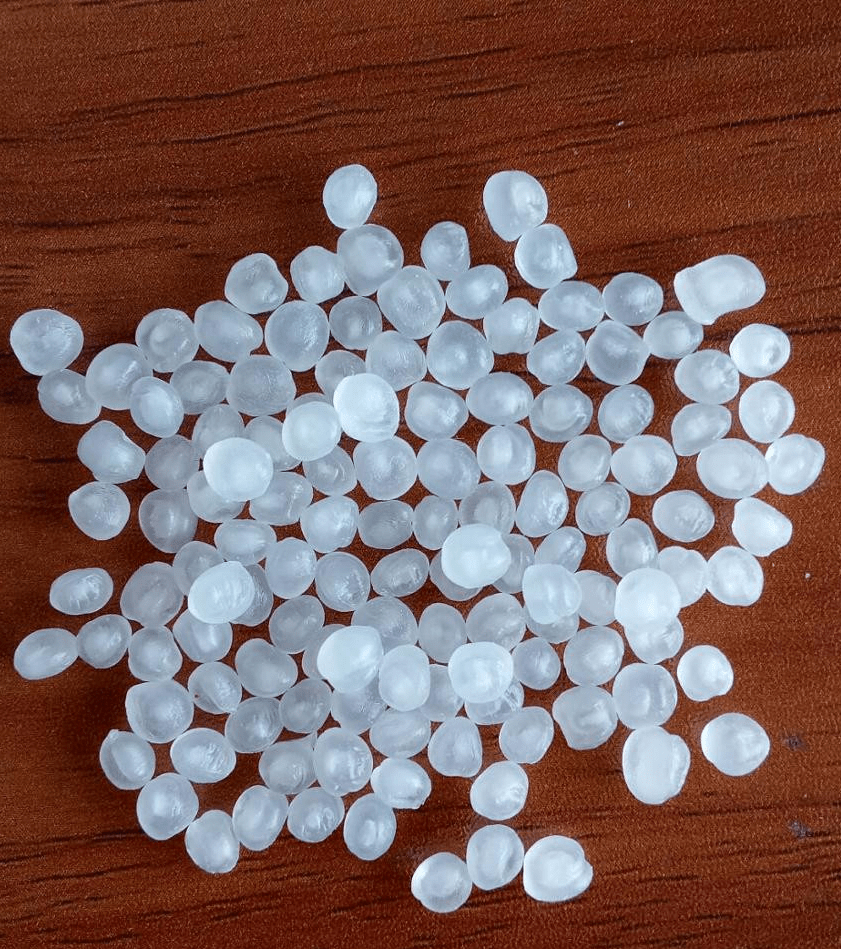
01.
POLYPROPYLENE GRANULE TPPD30S
Polypropylene of the TRP D 30 S brand is a homopolymer of polypropylene, suitable for extrusion for the purpose of forming sheet thermoplastics, filament fabric and monofilament. Polypropylene of the TRP D 30 S brand is designed for the production of a rigid sheet for the purpose of high-quality molding of sheet thermoplastics such as glasses for vending machines, packaging of dairy products and trays intended for fruit, biscuits and chocolate. Polypropylene of the TRP D 30 S brand can be used for the production of monofilament used, for example, for the production of brush and broom filler, as well as for other technical purposes.
| NAME OF INDICATORS | STANDARTS |
|---|---|
| Melt volume velocity (melt flow rate), g/10min | 2,7-3,7 |
| Yellowing index of polymer granules, not more than: | 2 |
| Granule size, pcs/g | 40-60 |
| Granule uniformity,%, max: | 50 |
| Flexural modulus of elasticity, H / mm 2, not less: | 1300 |
| Tensile strength at yield strength, H / mm 2, not less: | 30 |
| Softening temperature according to Vick (10H), °C, not less: | 145 |
| Permissible deformation temperature at 0.46 MPa, °C, not less: | 110 |
02.
HDPE PELLET-A4009MFN 1325
A4009MFN1325 it is a homopolymer of high-density polyethylene with a narrow molecular weight distribution, intended mainly for the extrusion of monofilament filaments.
- A4009MFN1325 Features:
- High-strength monofilaments and tapes;
- Very low gel content;
- Excellent process performance and surface quality;
- Very low moisture/ vapor conductivity.
-
Scope of application:
- Monofilament extrusion;
- High-strength belts;
- Cereal product lines;
- Injection molding.
| NAME OF INDICATORS | STANDARTS |
|---|---|
| Melt volume velocity (melt flow rate), g/10min | 0,9 |
| Density, (kg / m3) | 960 |
| Tensile strength at yield strength, (MPa) | 30 |
| Tensile strength at the moment of rupture, (MPa) | 22 |
| Elongation at break, % | > 500 |
| Elastic modulus at break, (MPa) | 110 |

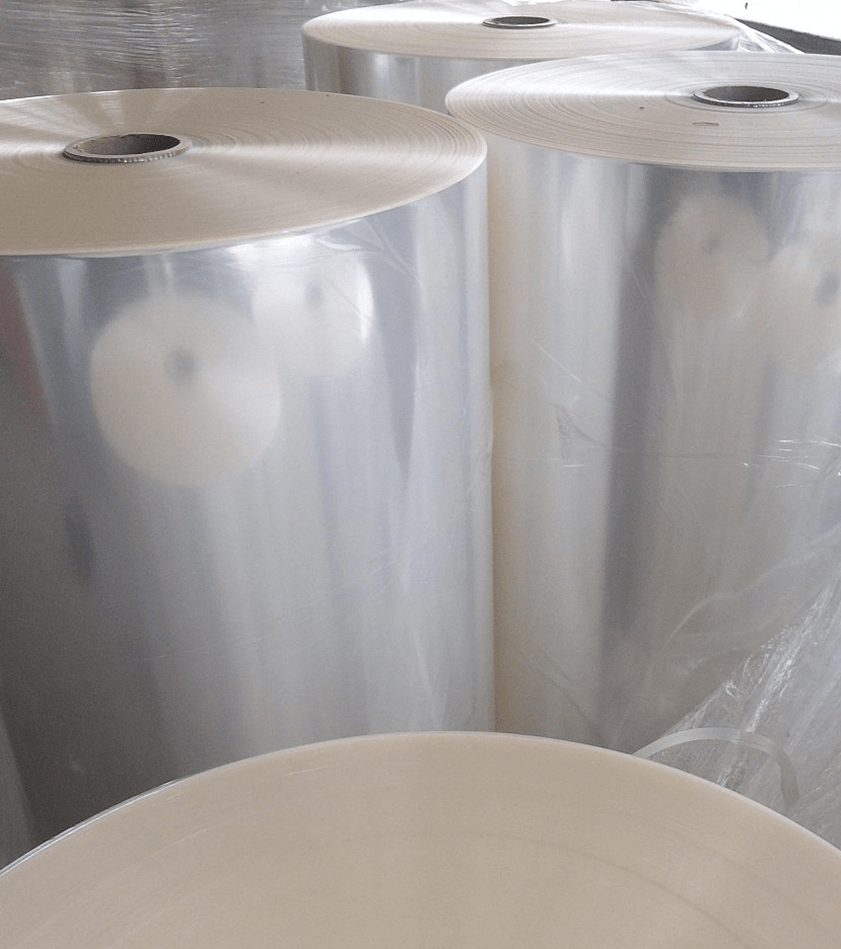
03.
BOPP-Film
BOPP-Film (biaxially oriented polypropylene film, 1-layer and 3-layer, with a thickness of 15-50 microns).
It is used in the production of soft packaging made of polymer film for food and everyday goods, labels, and adhesive tape. The BOPP film production technology gives it high strength and elasticity.
BOPP film has high barrier properties, it is resistant to various aggressive environments, inert and safe for humans.
| NAME OF INDICATORS | STANDARTS |
|---|---|
| Thickness, (microns) | 15 - 50 |
| Ultimate strength, H / mm2 (MPa) | 140,19 |
| Elongation at break at tension, % | 120,86 |
| Coefficient of friction, permissible ± 0.1 | 0,372 |
| Permissible thickness, % | 0,4 |
| Turbidity, % | 1,8 |
| Gloss, % | 101,7 |
| Ultimate strength, Din / cm | 40 |
| Shrinkage at 120 °C, 5min, % | 2,5 |
| Weight (weight) 1m2, g / m2 | 23,4 |
| Weld strength at 130 °C, 1c, 1 bar, H / 15 mm | 2,9 |
04.
BASE OIL SN-350
Base oil SN-350 is a product of oil distillation, a component of the base of commercial lubricating oil.
Base oil SN-350, is intended for use in machines and mechanisms of industrial equipment, the working conditions of which do not impose special requirements for the antioxidant and anticorrosive properties of oils. It is also used as a basis for the production of lubricants, mainly motor oils.
- ADVANTAGES OF SN-350 BASE OIL
- high oxidation stability;
- good susceptibility to additives;
- low sulfur content;
- excellent viscosity-temperature characteristics.
| NAME OF INDICATORS | STANDARTS |
|---|---|
| Kinematic viscosity at an index of 100 °C | 92 |
| Flash point in an open crucible | 230 |
| Total amount of acids, mg | 0,0061 |
| Sulfur content, % | 0,32 |
| Evaporation loss, % | 7,67 |
| Density, at 15 °C, g / cm3 | 0,880 |
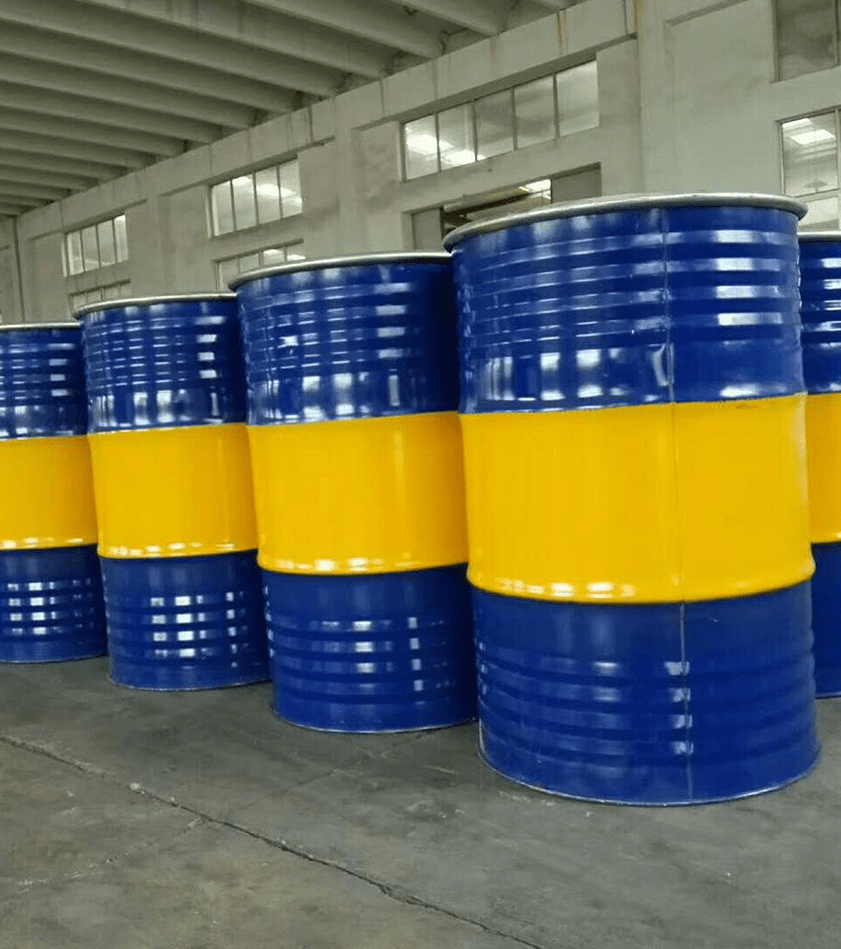
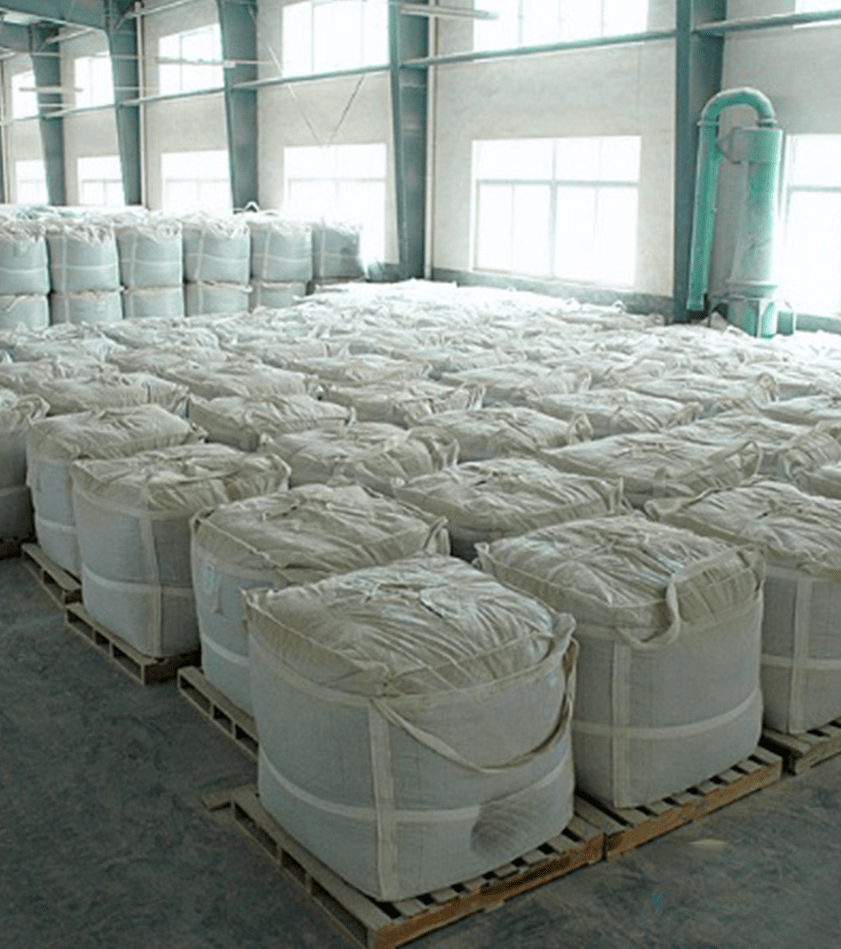
05.
Cotton
Our company offers two types of varieties, which are divided into different brands: Medium-fiber variety - "149F", "133", "Eloten-7", "Dashoguz-120", "Serdar", "S-4727". Fine-fiber variety - "Eloten-14", "9871-I", "Eloten-32".
Medium-fiber varieties are used to produce a wide range of medium-density fabrics - calico, calico, satin. The fluff of short fibers not suitable for spinning production goes to furniture, clothing and medical cotton wool.
Fine-fiber varieties, processed into smooth and fine combed yarn. In production, it is used to produce high-quality cotton fabrics, such as cambric and awning.
| Characteristics of cotton fiber types | |||
|---|---|---|---|
| Type | Stack mass length, mm, not less | Linear density, mtex, max | Specific breaking load, gs/tex |
| 1а | 40.2 | 125 | 34.0-35.0 or more |
| 1b | 39.2 | 135 | |
| 1 | 38.2 | 144 | |
| 2 | 37.2 | 150 | 31.0-32.0 or more |
| Characteristics of cotton fiber classes | |||||
|---|---|---|---|---|---|
| Cotton Fiber grade | Norms of the mass fraction of defects and weed impurities, % not more, by classes of cotton fiber | ||||
| High | Good | Middle | Normal | Weed | |
| I | 2.0 | 2.5 | 3.0 | 4.0 | 5.5 |
| II | 2.5 | 3.5 | 4.5 | 5.5 | 7.5 |
06.
Road bitumen BND 60/90
Petroleum bitumen viscous road BND 60/90 (GOST 22245-90) - a mixture of heteroorganic compounds and hydrocarbons that does not boil off at oil distillation temperatures.
Bitumen is used as a binding material in the repair and construction of road surfaces. It is recommended for use in the second-fifth road-climatic zones at the average monthly temperature of the coldest season in the range from -10 to +5°C.
| NAME OF INDICATORS | STANDARTS |
|---|---|
| Penetration, 0.1 mm at temperature: | |
| 25°С | 61 - 90 |
| 0°C, not less than: | 20 |
| Temperature, °C: | |
| Softening, not lower than: | 47 |
| Brittleness, not higher: | -15 |
| Flashes, not lower than: | 230 |
| Ductility, cm, not less at temperature: | |
| 25°С | 55 |
| 0°С | 3,5 |
| Change in the softening temperature after heating, °C, no more: | 5 |
| Penetration index | from -1.0 to +1.0 |
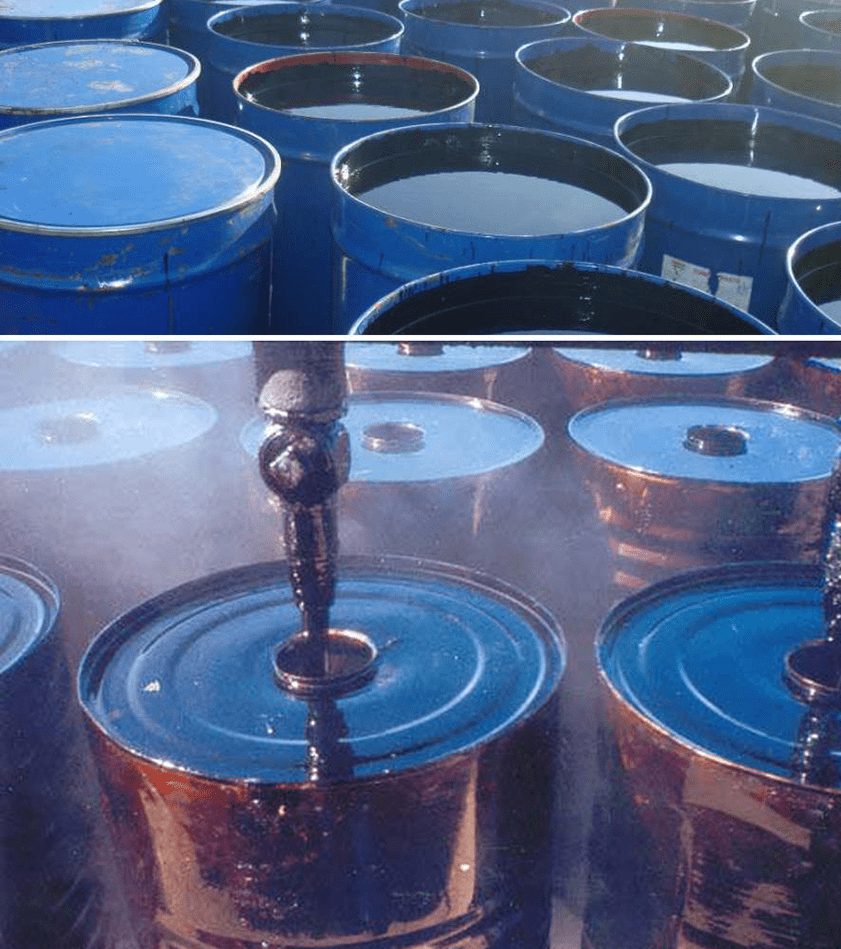
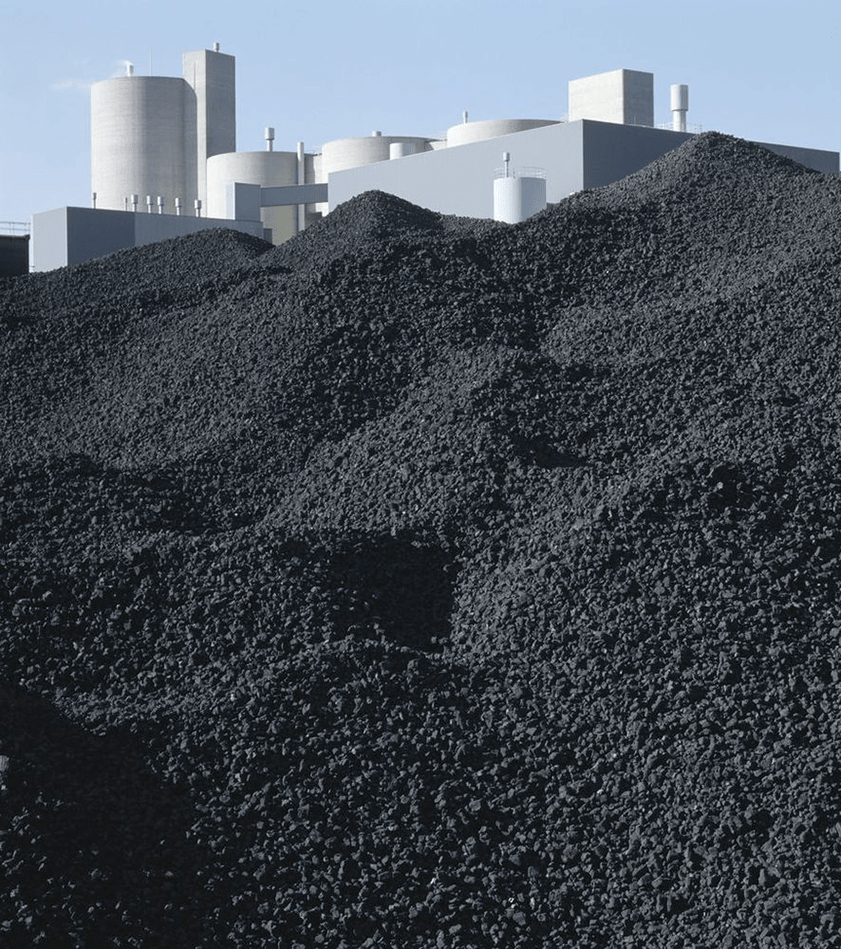
07.
Petroleum total and calcined coke
Petroleum cokes are carbonaceous materials - the carbon content in them is 92-95% (wt.). Depending on the quality of the raw materials, they may contain 2-7% hydrogen, 1-7% (wt.) sulfur, nitrogen, and oxygen. In coke, there are also other elements - metals and non-metals, such as vanadium, iron, nickel, sodium and others that make up its inorganic part and increase the ash content of coke, which is undesirable.
The demand for petroleum coke is very significant. The main consumer of coke is the aluminum industry: coke serves as a reducing agent (anode mass) when smelting aluminum from aluminum ores (bauxite). The specific consumption of coke is quite high - 550-600 kg / t of aluminum.
- Other applications of coke:
- as a raw material for the manufacture of electrodes used in steelmaking furnaces;
- for the production of carbides (calcium, silicon), which are used in the production of acetylene;
- in the production of grinding materials in the manufacture of conductors, refractories, etc.
| NAME OF INDICATORS | STANDARTS | |
|---|---|---|
| А OKP 02.5821.9909 |
B OKP 02.5821.9910 |
|
| Petroleum calcined coke TU 05766698-17-2011 | ||
| Mass fraction of total moisture,%, no more: | 0,5 | 0,5 |
| Ash content,%, max: | 0,7 | 0,6 |
| Mass fraction of sulfur,%, not more than: | 1 | 0,8 |
| Actual density, g / cm3 | Not less than 2,08 | 2,06-2,08 |
| Mass fraction of coke with a size of more than 6 mm,%, not less: | 30 | 30 |
| Mass fraction of the oiling product,%, no more: | 0,5 | 0,5 |
| Total petroleum coke TU 05766698-13-2015 | ||
| Mass fraction of total moisture,%, no more: | 3,0 | |
| Ash content,%, max: | 0,6 | |
| Mass fraction of sulfur,%, not more than: | 0,6 | |
| Mass fraction of volatile substances,%, max: | 11,0 | |
| Actual density after calcination at 1300 °C for 5 hours, g / cm3, not less: | 2,08 | |
| Mass fraction of coke with a piece size of 8 mm,%, no more | 60 | |
08.
Salt ground 1st grade
Salt grind 1 is a great fine food salt according to GOST R 51574 with a granule of up to 1.2 mm not less than 85%, over 2.5 not more than 3%. All types of grinding 1 available for home and production of any scale.
Grinding 1 food salt is used at home, in restaurants, in all types of food and chemical industries, packaging in jars and packs. Salt has HACCP, ISO, ORGANIC, GOST certificates and is produced in proven environmentally friendly places.
| NAME OF INDICATORS | STANDARTS |
|---|---|
| Appearance | Crystal Bulk Product |
| Taste | Salty, without any foreign taste |
| Color | White |
| Odor | No foreign odors |
| Mass fraction of sodium chloride,%, not less | 99.70 |
| Mass fraction of calcium ion,%, max | 0.02 |
| Mass fraction of magnesium ion,%, max | 0.01 |
| Mass fraction of the sulfate ion,%, max | 0.16 |
| Mass fraction of potassium ion,%, max | 0.02 |
| Mass fraction of iron (III) oxide,%, max | 0.005 |
| Mass fraction of sodium sulfate,%, no more | 0.20 |
| Mass fraction of water-insoluble residue,%, max | 0.03 |
| Mass fraction of moisture,%, no more, for salt: | |
| boiling water | 0.10 |
| stone | - |
| self-sedimentary and sadoic | - |
| 10 pH of the solution | 6.5-8.0 |
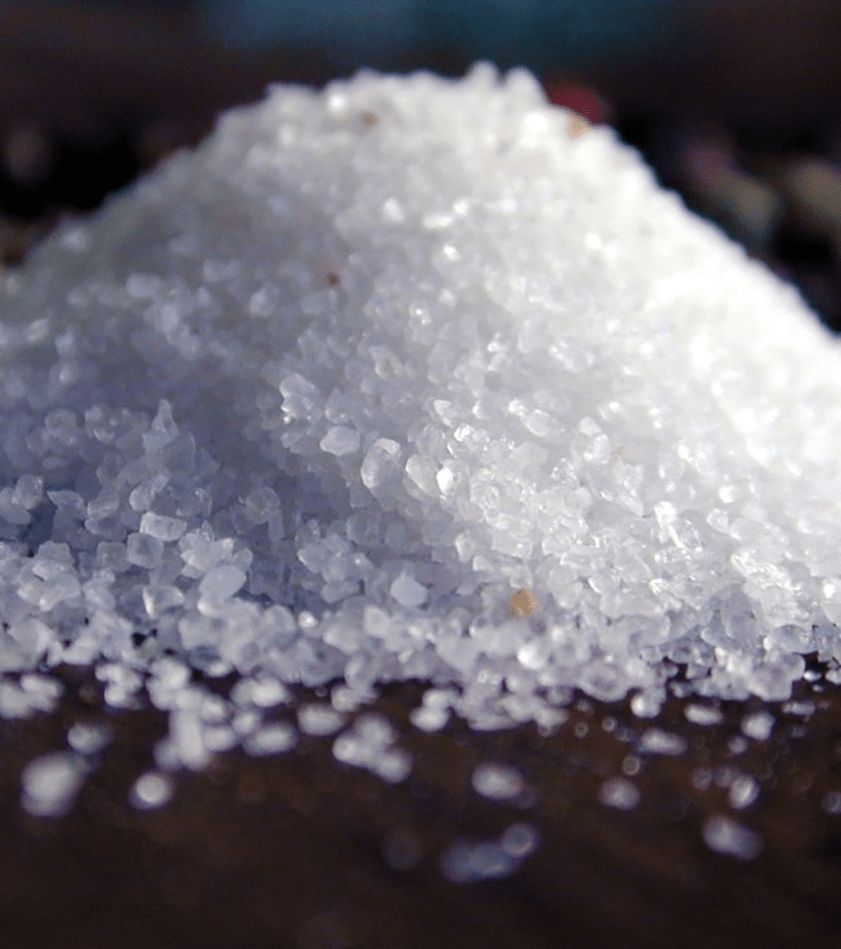

09.
Technical iodine
It is used in the pharmaceutical industry for the manufacture of medicines, for the production of iodide compounds.
Packaging: Plastic barrels with a liner of 50 kg.
| NAME OF INDICATORS | STANDARTS |
|---|---|
| Iodine content,%, not less: | 99 |
| Content of chlorides and bromides,%, no more: | 0,01 |
| Organic matter content,%, max: | 0,08 |
| Calcination residue,%, max: | 0,05 |
| Water content %, not more than: | 0,8 |
10.
Technical carbon grade K-354
Technocarbon K-354 (TDS -7885, OKP 21661110100)- channel, active, obtained in a diffuse flame during the thermal-oxidative decomposition of natural gas with a high dispersion index and a low structural index.
Carbon black K-354 is used as a reinforcing filler in rubber mixtures and as a pigment for lacquers, enamels and polygraph paints. The ability of technocarbon to significantly increase the mechanical properties of rubbers determines its use in the production of pneumatic and solid tires, various rubber-technical products, shoes, electric cable sheaths, and household medical products. Carbon black is widely used in the electrical industry, in the production of certain alloys and special papers, various lacquers and paints; including printing, plastics and other products. In the production of printing inks, enamels, lacquers, K-354 carbon black is mainly used as having the deepest black color. It is also used in the production of chemical reagents, in medicine, dyeing, film, photo industry and other industries. Technocarbon K-354 is produced in granular form, supplied in valve, polyethylene.
| NAME OF INDICATORS | STANDARTS |
|---|---|
| Specific geometric surface, m2/g | 90 - 100 |
| Specific adsorption surface, m 2/g, no more: | 140 |
| pH of the aqueous suspension | 3,7 - 4,5 |
| Mass fraction of losses at 105 °C,%, no more: | 1,5 |
| Ash content,%, max: | 0,05 |
| Mass fraction of the residue,%, no more, after sieving through a sieve: | |
| 0045К | 0,08 |
| 05 К | 0,0010 |
| 014К | 0,004 |

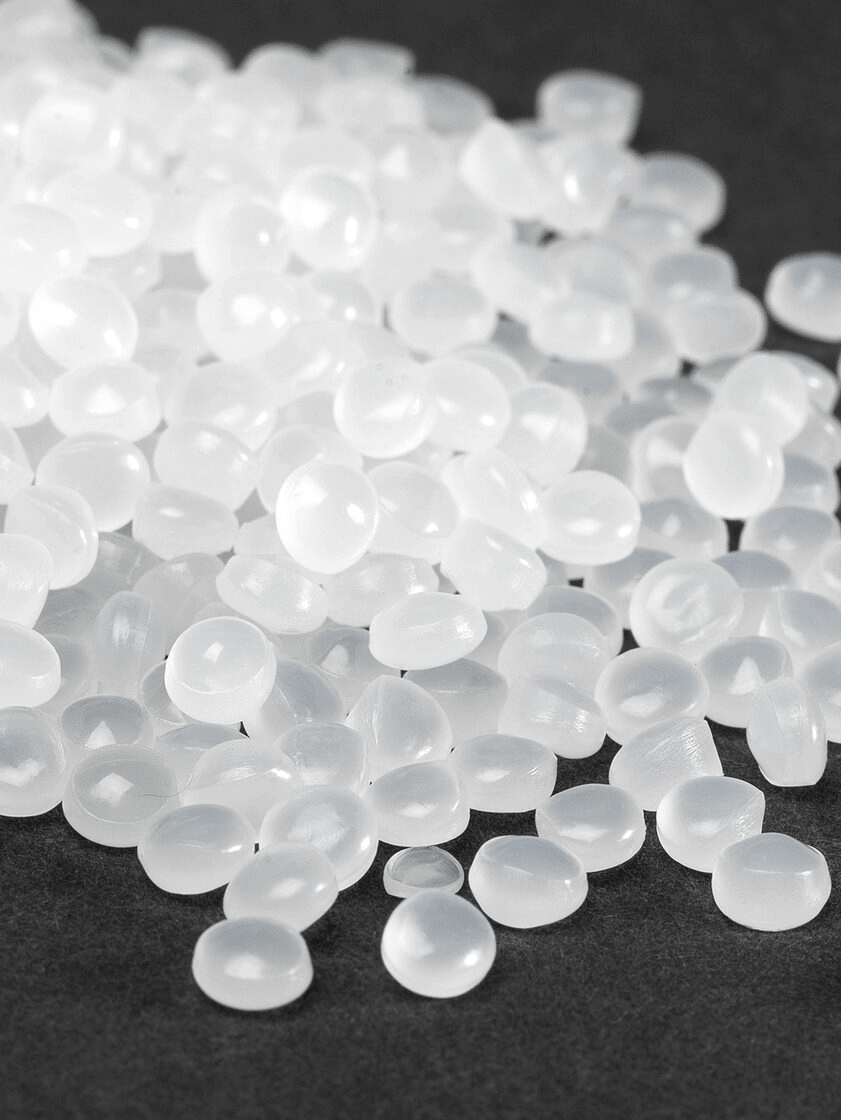
11.
Polypropylene granule TPPF79FB and TPPD382BF
Description and scope of application:
Polypropylene of the brand TRPF79FB is a polypropylene homopolymer designed for the production of high-number staple fiber intended for the production of heat-bonded non-woven materials. It has excellent spinability, excellent ability of technical sizing of fibers and great resistance to fading.
Fibers are used as raw materials for the production of products used in the hygienic and medical fields. It is also used for the production of filters and fibers in the automotive, light and furniture industries.
Polypropylene grade TRPF79FB has an excellent thermal sizing ability of 20-30%. This makes it possible to release fibers with higher tear strength or lower consumption per square meter.
Polypropylene grade TPPD382BF is a homopolymer designed for the production of biaxially oriented films and non-orientable films (cast films). In addition, it has excellent dielectric property, high transparency, and high strength and resistance in the processing process.
The polymer base used for the manufacture of polypropylene grade TPPD382BF fully meets the requirements of the FDA (Food, Drug and Cosmetic Administration, USA) established in the norm of Federal regulations. Polypropylene grade TPPD382BF meets the FDA criteria for use in contact with food.
| NAME OF INDICATORS | STANDARTS | |
|---|---|---|
| TPPF79FB | TPPD382BF | |
| Melt volume velocity (melt flow rate), g/10min | 10-15 | 2.7-3.7 |
| Yellowing index of polymer granules, not more than | 2 | 2 |
| Granule size, pcs/g | 40-60 | 40-60 |
| Granule uniformity,%, no more | 50 | 50 |
| Flexural modulus of elasticity, N / mm 2, not less | 1450 | 1300 |
| Tensile strength at yield strength, N / mm 2, not less | 31 | 30 |
| Tensile elongation at yield strength, %, not less | 12 | 11 |
| Izod impact strength (incised at 230°C), kJ / m2, not less | 2.5 | 4.5 |
| Vick softening temperature (10H), 0°C, not less | 150 | - |
| Permissible deformation temperature at 0.46 MPa, 0°C, not less | 130 | - |
| Thermal-oxidative stability at 1500°C (in air), hour, not less | 120 | 360 |
| Determination of the number and size of gels in polyolefins, no more than | ||
| defects > 0.2мм defects 0.7-1.5мм defects 1.5-2.5мм defects > 2.5мм |
- | 500 |
| - | 50 | |
| - | 10 | |
| - | 0 | |
| Opacity of polyolefin plates and films | - | Not normalized, the definition is mandatory |
12.
HDPE Pellet T60-475-119
Description and scope of application:
Polyethylene T60-475-119 is a high-density polyethylene with a narrow molecular weight distribution. Parts made of this material show a finished polished surface, and also have good impact strength and rigidity.
- T60-475-119 Properties:
- Good rigidity;
- Polished surface;
- High degree of impact strength;
- Compliance with the requirements of the Food, Drug and Cosmetic Administration 21CFR 177.1520.
Application examples:
Technical details, garbage containers.
| NAME OF INDICATORS | STANDARTS |
|---|---|
| Melt flow rate (5 kg load), g/10min | 0.25-0.35 |
| Density, kg / m3 | 957-961 |
| Tensile strength at yield strength (50mm / min) | 21 |
| Elongation at break, %, not less | 600 |
| Softening temperature according to the Vick method (1kg) | 120 |
| Bell Telephone stress Crack Resistance Test (Resistance to cracking under the influence of the environment (SRVO) F50 at 50°C, at 100% concentration), hour, not less | 1000 |

CONTACT US
For all questions concerning mutually beneficial cooperation, suggestions and claims, use the specified contact information
© 2021 All rights reserved.
